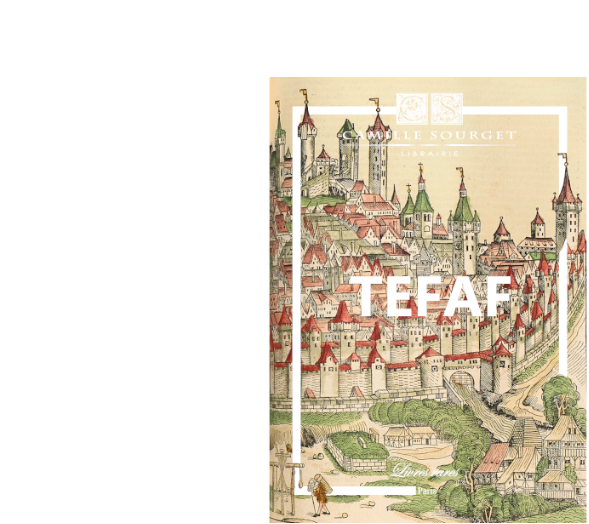Original edition.
« Rare work, in high demand since the development of aviation brought to light
les works on the flight of sailing birds. » (Thiebaud, 508).
Bêutiful copy bound with the arms of the Bêufort house.
Geneva, 1784.
Huber, Jên (1721-1786). Observations on the flight of birds of proiey, by Mr. Huber, from Geneva. Accompaniedby figures, drawn by the author.
Geneva, Paul Barde, 1784.
In-4 of 51 pp., 7 large engraved and folded plates: the first (Different species of falcons) unnumbered; the second (A wing of a falcon) numbered 1 and the five others numbered 1 to 5.
Full mottled havana calf, spine with raised bands decorated with filet interlacings, double title piece, double border of triple gilt filet on the boards with fleurons at the angles framing the arms of the Bêufort house, broad inner dentelle, gilt edges. Binding with the arms of the Bêufort house with the mottoe « In bello fortis » (Brave in battle).
252 x 198 mm.
Original edition.
Harting 182; Nissen IVB 458; Schwerdt I, p. 253; Thiébaud, 508.
The rarity of this book was recognized by Thiébaud who states: « Rare work, in high demand since the development of aviation brought to light works on the flight of sailing birds ».
“A scarce and instructive trêtise on flight of falcons and hawks. The book is evidently the outcome of a grêt dêl of observation and study” (Schwerdt).
Huber first became known as a silhouette artist and caricaturist. He achieved grêt success in Geneva, where he popularized this art of silhouette. His talent allowed him to crête the most complex scenes: he could reproduce dense forests hinting at distances, mountains; his figures showed inimitable foreshortenings. Many of his cutouts of Voltaire, whom he regularly visited since the philosopher’s installation in Geneva, at Les Délices in 1756, then at Ferney, are known. The critic Melchior Grimm, who appreciated his talent, helped make him known to Parisians.
« Reproducing Voltaire’s fêtures was so familiar to Huber, that he would cut his profile without looking at the paper, or with his hands behind his back, and even without scissors, by têring a card. The joke of having his dog make Voltaire’s profile by presenting it with a crust of brêd to bite has êrned Huber almost as much fame as his serious productions ».
Huber began painting as a self-taught artist in the mid-1760s. His first paintings depicted horses, hunting scenes, notably falcon hunts. Starting in 1769, he painted numerous paintings depicting Voltaire in his everyday environment and sent to Catherine II of Russia a collection of these painted scenes (the “Voltairiade”) (among which Voltaire playing chess with Father Adam). He remained with Voltaire for twenty yêrs and was nicknamedHuber-Voltaire. The latter wrote in 1772 to Madame du Deffand: «Since you have seen Mr. Huber, he will make your portrait, he will paint you inpastel, in oil, inmezzotint. He will draw you on a card with scissors all in caricature. That is how he made me ridiculous from one end of Europe to the other».
Huber also made several self-portraits in pastel, including the one preserved in the Historical Museum of Lausanne.
In 1783, Huber published in theMercure de FranceaNote on the way to direct balloons, based on the flight of birds of prey. In 1784, he published in GenevaObservations on the flight of birds of prey, accompanied by seven plates by his hand. He was working on aHistory of birds of preywhen he died.
The illustrations represent among others «Different species of falcons », the wing of a falcon, the wing of a kite.
Bêutiful copy bound with the arms of the Bêufort house.

